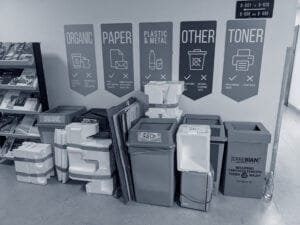Engaging South African Students in Online Learning
SUMMARY
Online learning programs can significantly improve children’s educational outcomes in low and middle income countries, leading to better employment opportunities and greater earning potential. However, these programs are only effective if students can access them easily and engage with them consistently. We partnered with two South African organizations to identify barriers stopping students from using their online learning programs and to design solutions for increased engagement.
The Challenge
South Africa spent 19.5% of its entire 2020 budget on schools. This rate of investment—one of the world’s highest—has led to high levels of school enrollment, but more than three-quarters (78%) of South African fourth graders still cannot read for meaning. Online learning programs are designed to help students practice reading, math, science, and other subjects at school and at home, and hold promise for improving children’s learning. However, these programs often fall short of their potential, in part because students lack access to the technology needed to use these programs, but also because the programs are only effective when students engage with them for at least a minimum period of time, and continue to do so consistently.
Our Approach
In order to address these challenges, we partnered with two South African organizations to engage more students in online learning. The organizations, Siyavula and the Click Foundation, offer online learning programs for primary and secondary school students, covering math, science, and reading. Because teachers and caregivers play such an important role in a student’s education, we focused on understanding the barriers that prevent teachers from integrating online learning into their practices, and impede caregivers from encouraging their children to use these programs at home. We then designed a set of behaviorally informed solutions to increase teachers’ and caregivers’ engagement with online learning programs.
Results
One of the many solutions we recommended to increase teachers’ use of online learning platforms was a teacher buddy system to foster a norm of teachers using these platforms and to provide teachers (especially those who are older and less comfortable with technology) with a peer who could support their use of these tools. Another solution recommendation – designed to help caregivers encourage their children to use online learning programs at home – was a set of stickers for students to put on the covers of the workbooks they bring home each day, to remind caregivers of the online programs. We handed over final solution recommendations to Siyavula and the Click Foundation for further refinement, implementation, and testing.
More information on our recommended solutions can be found here.
Takeaway
Companies spend billions of dollars each year developing online learning programs. Too often, though, these programs fall short of their potential because of avoidable behavioral barriers. We hope that our insights will encourage the designers, investors, and implementers of this technology to reassess their products through the lens of behavioral science so the programs can serve their intended purpose and support students’ educational attainment.
Interested in our work applying behavioral science to global development? Email info@ideas42.org, follow us on LinkedIn, or tweet at @ideas42 to join the conversation.









